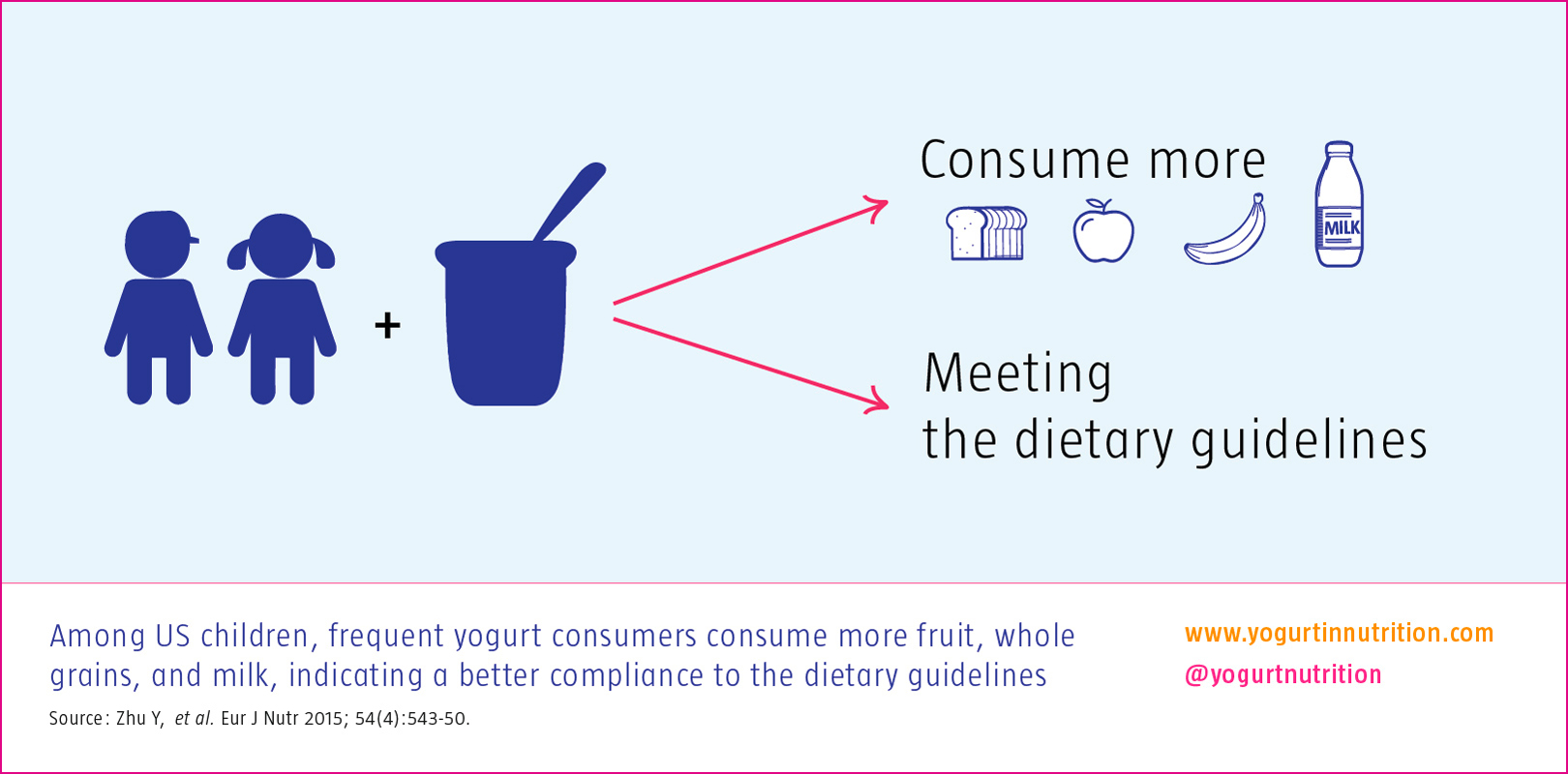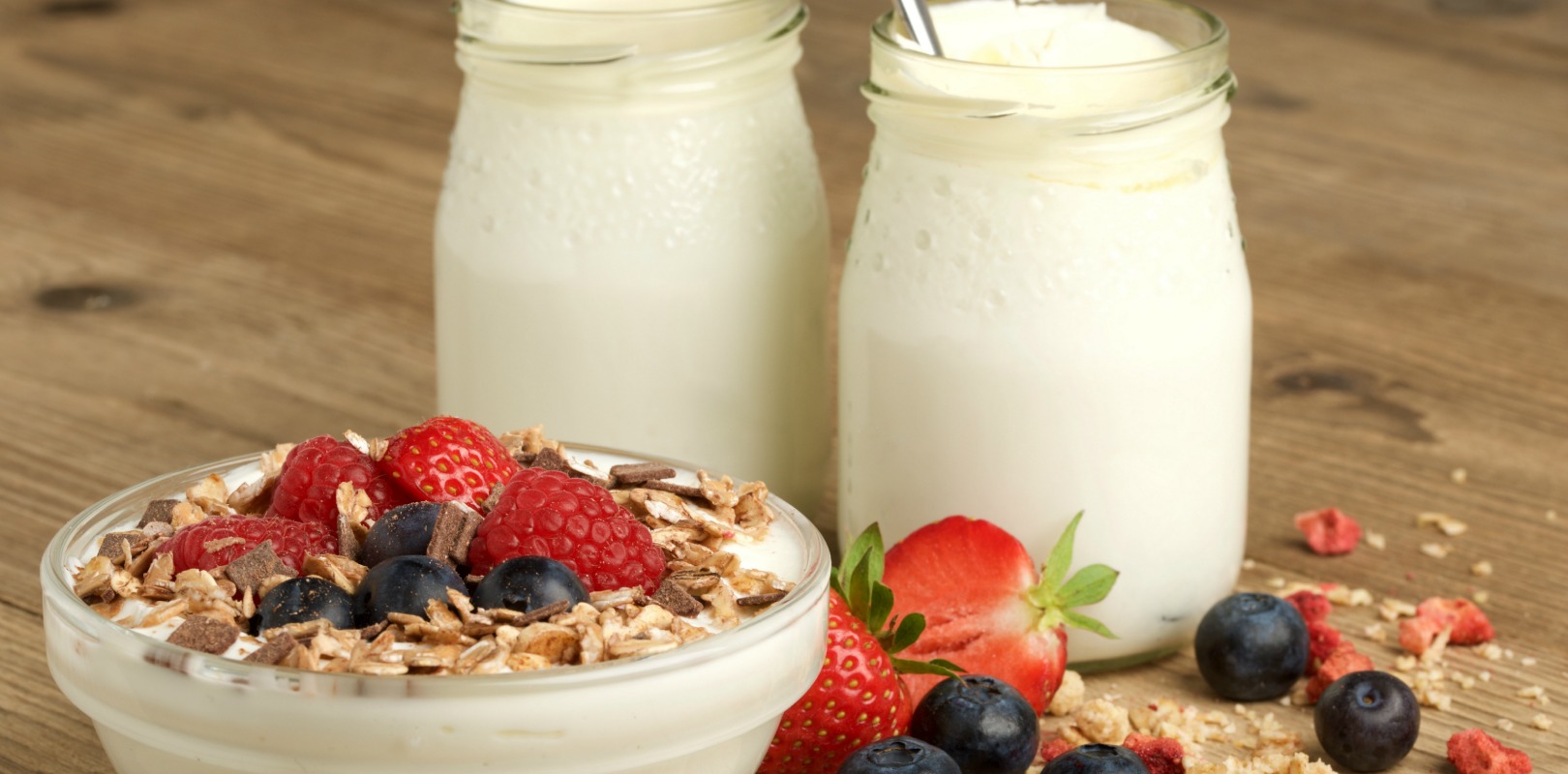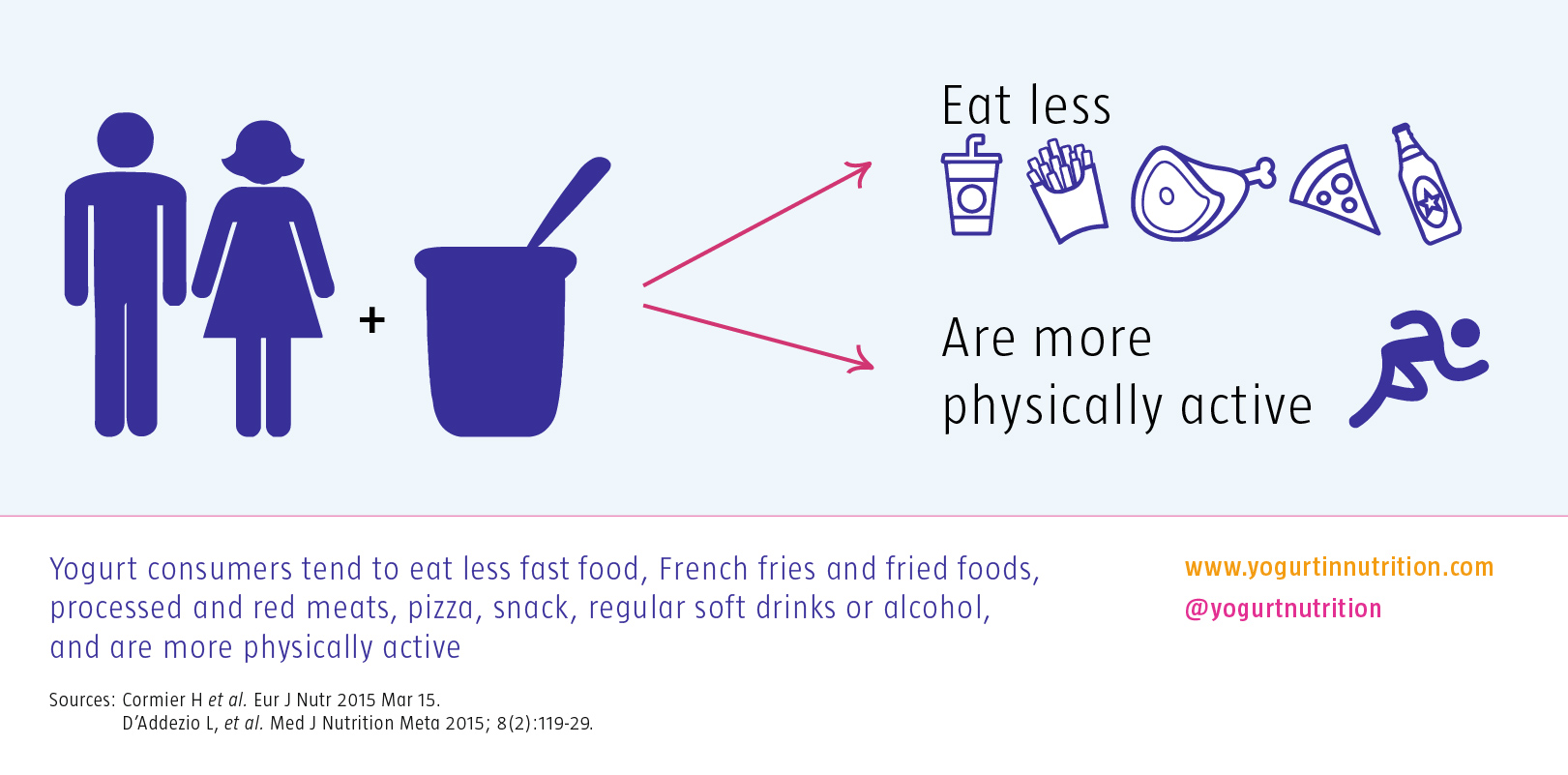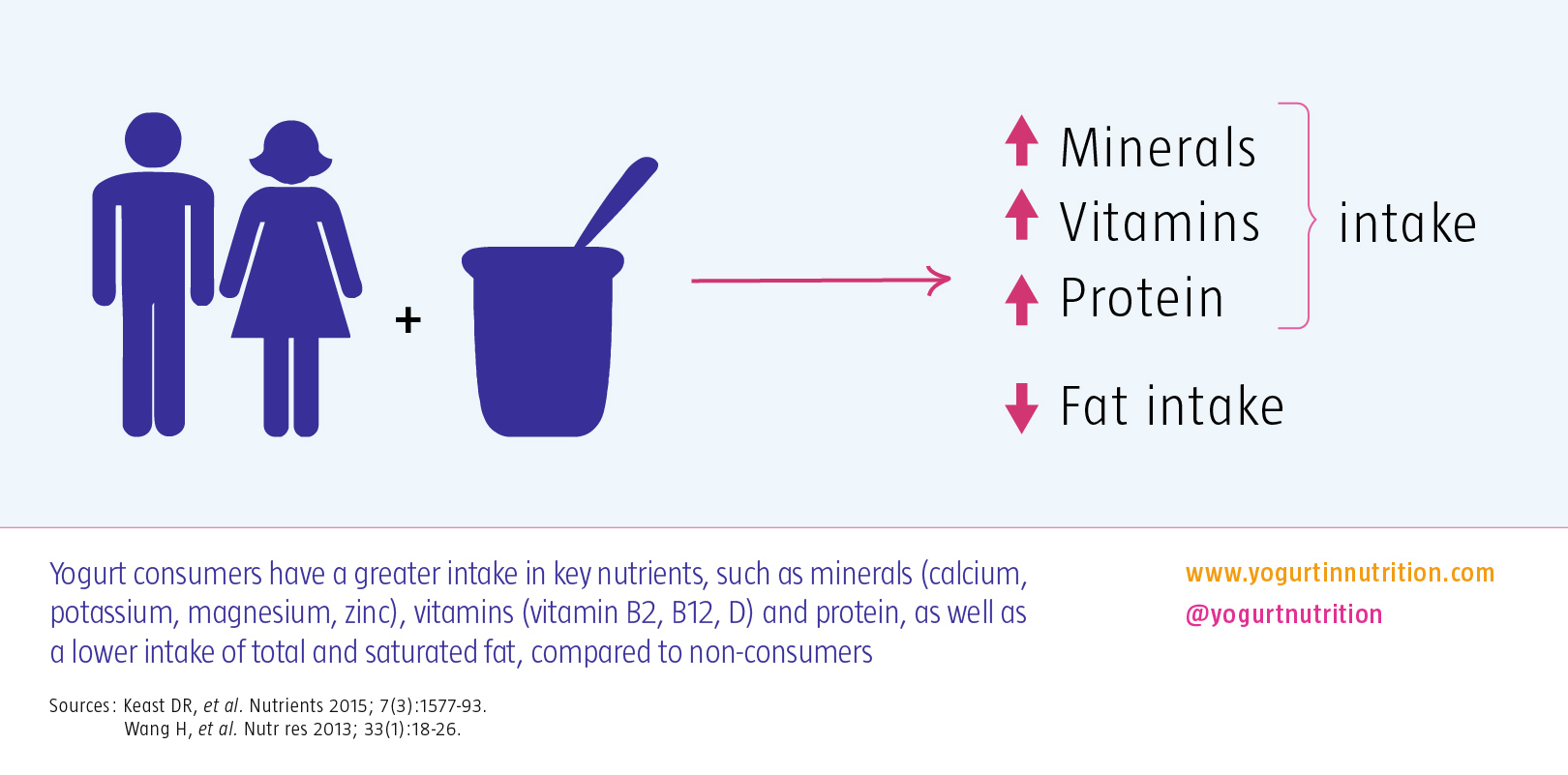02 Dec 2015
•
1 min read
Improved diet quality in yogurt consumers

Related posts
Table of contents


Yogurt consumption has been associated with health and well-being for centuries, but scientific research efforts on the potential health effects of conventional yogurt have mainly started during the last century. A recent scoping review led by the University of York (UK) assessed the volume of available evidence on the health effects of conventional yogurt.
The review of an extensive literature search was conducted in November 2013. Randomized controlled trials were selected and categorized, according to the eligibility criteria, established in the protocol. 213 studies were identified as relevant to the scoping question :
According to the authors, there is a substantial evidence base for investigating the health effects of conventional yogurt, which is more related to weight management and nutrition-related health outcomes, cardiovascular health, gastrointestinal health and cancer.

American researchers examined the longitudinal association between dairy consumption and the changes in blood pressure (BP) as well as the risk of hypertension (HTN) incidence among 2.636 US adults, who have participated in the Framingham Heart Study and were free of HTN. Data on dietary intake and anti-hypertensive medication use were collected through food frequency questionnaires and self-reporting. Incident HTN was defined as follows: systolic BP (SBP)≥140 mmHg, or diastolic BP (DBP)≥90 mmHg or anti-hypertensive medication use.
Each additional yogurt serving associated with a 6% reduced risk.
After the follow-up period, 1.026 participants were diagnosed with incident HTN. The research results show that a high consumption of total dairy foods, total low-fat/fat-free dairy foods, low-fat/skimmed milk and yoghurt were associated with a smaller increase in SBP and a lower risk of HTN incidence per year.
In contrast with the observed lower HTN incidence earlier during the follow-up (i.e. each additional serving/week of skimmed/low-fat milk intake was associated with a 2 % lower risk), the significance of this correlation seemed to be attenuated over time, with the exception of total dairy foods and yogurt. These findings suggest that skimmed/low-fat milk may delay the symptoms, but not lower the eventual risk of HTN as individuals get older. Whereas consuming 1 extra yogurt serving per week was related to a 6% reduced risk of developing incident HTN (P=0·01). Similar inverse associations were found for the consumption of total dairy (P=0·04) and fermented milk products (P=0·01).

Selected for you this week: Food you should be eating every day and how to get them into your diet.
Fitting yogurt into your daily diet doesn’t have to be difficult; there are lots of simple ways you can do it. Have yogurt topped with oats, fruit compote and seeds for breakfast. Use yogurt as a base for salad dressings or pasta sauces. Add frozen fruit to yogurt and create your own frozen yogurt. To be healthy, as well as eating good, nutritional foods, we also need these three foods in our diets.


Freshly baked pizza tastes great, and this recipe requires no waiting around for the dough to rise. Just mix it up and you’re ready to go. Try it with your favourite toppings.
400g tin chopped tomatoes
1 tsp dried mixed herbs, plus extra for topping
2 pinches caster sugar
1 garlic clove
200g/7oz mozzarella (or any other cheese), torn into pieces, for topping
salt and freshly ground black pepper
300g/10½oz self-raising flour, plus extra for dusting
1 tsp baking powder
½ tsp salt
300g/10½oz natural yoghurt

A. Tremblay : three factors can explain the impact of #yogurt consumption on a #healthierlifestyle #yogurt2015 #FENSBERLIN2015
— YogurtInNutrition (@YogurtNutrition) October 22, 2015
why does yogurt induce beneficial effects 1. Nutrition 2. Impact on other fd choices 3. Relationship w healthy behaviours #FENS #yogurt2015
— Azmina Nutrition (@AzminaNutrition) October 22, 2015
yogurt consumers appear to have better nutrition: higher potassium, lower risk of deficiency of calcium vitB2 vitB12 Mg Zn #yogurt2015 #fens
— Azmina Nutrition (@AzminaNutrition) October 22, 2015
1. Regular #yogurt consumption in US is associated w/h a ↗ intake of fruits & vegetables #yogurt2015 #Framingham https://t.co/5CiEJLDkrg
— YogurtInNutrition (@YogurtNutrition) October 22, 2015
Cohort analyses: #DGAI greater in yogurt eaters. Basically, people ate better when they ate yogurt, period. #yogurt2015 #FENS2015
— Azmina Nutrition (@AzminaNutrition) October 22, 2015
Yogurt consumption associated with better diet quality & metabolic profile #Yogurt2015 #FENS2015
— EDEN (@sapiredda) October 22, 2015
Yogurt, fruit, veg, nuts associated with less weight gain. #yogurt2015 #FENS2015 pic.twitter.com/GZxiAm0gNV
— Azmina Nutrition (@AzminaNutrition) October 22, 2015
2. A. Tremblay: yogurt reformulation may have positive impact on appetite control https://t.co/q8Zpngdw7e #yogurt2015 #FENSBERLIN2015
— YogurtInNutrition (@YogurtNutrition) October 22, 2015
The Infogene study showed that #yogurt consumers = likely to have prudent dietary pattern https://t.co/4oXp2gEAaz @Hub_Nutrition #yogurt2015
— YogurtInNutrition (@YogurtNutrition) October 22, 2015
women who ate yogurt ate less fat, more protein, more calcium, were more active. Pass me some! #FENS2015 #yogurt2015 pic.twitter.com/uRQVfSzzYo
— Azmina Nutrition (@AzminaNutrition) October 22, 2015

Rebalancing the consumption of milk-based products by favoring the daily intake of less energy-dense foods, such as yogurt, will help consumers to reach nutritional adequacy.
According to French researchers, dairy consumption among the French population should be increased to meet nutritional recommendations. Compared to the observed diets, the modeling process increased the weights of three food groups: fruit and vegetables (+62%), starches and grains (+37%), and dairy products (+19%) in order to reach the nutritional recommendations. On the other hand, the weights of all other food groups were reduced: mixed dishes and snacks (−58%); meat, fish, poultry, and eggs (−12%); added fats (−31%); and sweets and savory products (−15%).
They also estimated the number of servings of the different milk-based products to fit into nutritionally adequate diets. The data of the French Enquête Individuelle & Nationale sur les Consommations Alimentaires (n=1,171) in 1999 were used to model an isocaloric nutritionally adequate diet, that met a set of many nutrient constraints, based on nutrient recommendations.
According to the calculations in the optimization process, the consumption of yogurt (+60%) and milk (+17%) should be increased and decreased for cheese (-48%) without changing the weekly portion of milk desserts. In the observed diets, cheese represented one out of two consumed portions of milk-based products, while in the modeled diets, cheeses, milk, and yogurts represented each one portion per day. The authors concluded that an increased consumption of milk-based products would be beneficial to support nutritional adequacy, by rebalancing the intake in favor of yogurt, which is less energy-dense.



